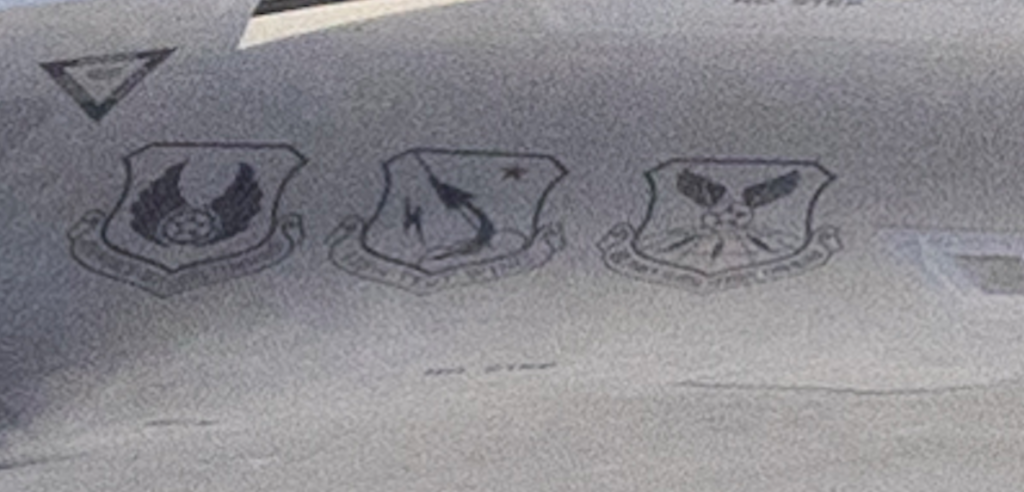The United States Air Force has released the first aerial image of its new, closely guarded B-21 Raider bomber. The new images, emerging just past the six-month mark since its maiden flight in November 2023, offer rare glimpses into the aircraft’s testing phase, a crucial step toward its eventual deployment.
The photos, unveiled by the Air Force, depict the B-21 Raider in various stages: taking off, soaring through the skies, and housed within a hangar at Edwards Air Force Base.
Since the B-21’s official unveiling in December 2022, the Air Force has kept the information private, with only a handful of photos released to the public.
No images were shared from its first flight at Northrop Grumman’s Palmdale facility on November 10, 2023, or its subsequent test flights from Edwards Air Force Base in the following months. Instead, most of the images have come from local aircraft spotters and photographers.

According to the Defense Visual Information Distribution Service, the B-21’s takeoff image dates back to January, while the flight and hangar photos were taken in early April.
This unveiling coincides with statements from the 412th Test Wing at Edwards affirming the positive progress of the B-21’s test flight program.
Air Force acquisition executive Andrew Hunter reiterated the program’s success, stating that the testing phase was proceeding effectively and aiding in understanding the platform’s characteristics.
“It is doing what flight test programs are designed to do, which is helping us learn about the unique characteristics of this platform, but in a very, very effective way,” Hunter noted, adding that significant milestones were expected later this year.
The B-21 Raider, a developmental penetrating strike bomber, is designed to deliver both conventional and nuclear munitions.
With a projected wingspan of approximately 140 feet, it is smaller than the B-2’s 172-foot wingspan. The Air Force aims to acquire at least 100 B-21s to replace its aging fleet of 45 B-1s and 20 B-2s over the next decade.
The exact number of completed test flights remains undisclosed. The decision to release these images of the B-21’s flight testing underscores the program’s momentum.
Given the bomber’s role in conflict with adversaries like China, its development is viewed as critical for overcoming enemy defenses through stealth and electronic warfare capabilities.
B-21 Raider: New Info Unveiled
The newly published images of the B-21 Raider bomber provide more details about the aircraft’s design, shedding light on its advanced features and capabilities. The photos of the aircraft, taken from various angles, offer a deeper understanding of its technological advancements and strategic significance.
One of the key observations from the images is the distinctive exhaust system seen during takeoff. Unlike its predecessor, the B-2, which featured a boxy, sugar-scoop exhaust, the B-21 exhibits a narrow, 2-D exhaust embedded in the jet’s tail.
This design suggests a focus on dissipating the aircraft’s heat to minimize its infrared signature while maintaining a slim profile to evade radar detection.
Further examination of the images reveals an auxiliary air inlet above the engines, designed to provide additional airflow during nose-up rotations.
This feature compensates for reduced air intake at high angles of attack, a necessity due to the top-mounted main air intakes. Like the B-2, the B-21 incorporates this scalloped feature to optimize airflow.

The images also highlight the deep shelf-like extension along the jet’s leading edge, particularly noticeable along its nose. This feature significantly enhances the aircraft’s low-observable characteristics, surpassing its predecessor, the B-2.
The cockpit design, with its small trapezoidal viewports tailored for signature control and the forward windscreen optimized for aerial refueling, can be seen clearly.
The fuselage is decorated with symbols representing Air Force Materiel Command, the 412th Test Wing, and Global Strike Command. The aircraft’s serial number (0001) is visible, although the typical year of acquisition is absent.
Another notable feature is the small rhombus-like aperture along the mid-upper fuselage area. There is speculation that it could be part of a highly secure directional data-link system found on the F-35.
Additionally, an antenna below the fuselage, retractable for stealth operations, and a temporary air-data probe extending from the lower forward fuselage further enhance the aircraft’s capabilities. These detailed insights into the B-21 Raider’s design underscore the aircraft’s cutting-edge technology and its crucial role in future military operations.
- Contact the author at ashishmichel(at)gmail.com
- Follow EurAsian Times on Google News




